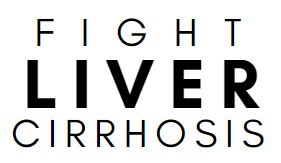There was a time, not long ago, when the face I saw in the mirror told a different story.
By November 2024, my skin was at its finest — supple, radiant, almost luminous.
There was a bounce in my step, a gleam in my eyes, and a quiet confidence that came from feeling good in my own skin.
But somewhere between December’s chill and April’s arrival, that glow quietly slipped away.
The face grew duller.
The skin below my knees began to itch — subtly at first, then insistently.
It wasn’t just the skin that was changing — it was my very outlook.
The stride wasn’t as bold.
The mirror didn’t nod back with approval like it once did.
Something deeper was stirring.
The Missing Piece: An Overlooked Deficiency
At first, I blamed the obvious culprits: winter dryness, age, stress.
Excuses were easy to make when life was busy.
December 2024’s blood work had focused elsewhere, missing the slow decline that was beginning inside.
The itching, the dullness — I chalked it up to “seasonal changes” and kept moving forward.
But by April 2025, when curiosity mingled with frustration, I finally ordered a broader panel.
And there it was — plain as daylight:
Vitamin D levels had plunged to 32.13 nmol/L, well below the healthy range of 75–250 nmol/L.
The loss of glow wasn’t superficial vanity.
It was the body’s quiet biochemical cry for help.
The Science of the Skin and the Soul
Vitamin D is no mere “bone vitamin.”
It’s the silent architect of resilience:
-
It maintains skin hydration and repair.
-
It regulates immune defenses.
-
It supports blood circulation to the outermost tissues.
-
It keeps inflammation quietly in check.
Without it, the body loses more than strength —
the skin itself grows thinner, drier, more fragile.
The very glow that health carves into our faces begins to fade.
The itch below the knees, the dullness across the cheeks —
they were not just cosmetic annoyances.
They were early warnings, whispered long before louder symptoms could scream.
Rebuilding the Foundation: Vitamin D and Beyond
Realizing the depth of the deficiency, I moved fast.
Aggressive repletion became the strategy:
-
Oral Vitamin D shots — two doses of 60ml each per week for two weeks,
then one dose per week for a month,
then two doses per month for maintenance.
But replenishing Vitamin D alone wasn’t enough.
I needed to fortify the scaffolding that held my skin — and spirit — together.
Every morning and evening, I began supporting my body with key supplements:
-
Collagen Complex to feed collagen production and restore elasticity to the skin.
-
NAC (N-Acetylcysteine) 600 mg every morning, to support cellular detox and energy without disrupting sleep.
-
ALA (Alpha Lipoic Acid) 300 mg, morning and night, to sustain metabolic resilience and rekindle that elusive inner glow.
This wasn’t about chasing beauty.
It was about restoring reserves that life, seasons, and perhaps a bit of neglect had drained.
Lessons Learned: Listening to Subtle Shifts
When you live with chronic vulnerabilities, it’s tempting to monitor only the big battles —
liver scores, blood sugars, critical thresholds.
But the body often speaks first through the smallest shifts:
-
The loss of a glow once taken for granted.
-
The subtle itching in neglected corners of the skin.
-
The heavy feeling when your reflection looks a touch unfamiliar.
Had I listened sooner, I might have acted earlier.
But even late lessons are worth their weight in gold.
Takeaway for Fellow Fighters
-
Respect your skin’s voice: loss of vibrance often hints at deeper metabolic needs.
-
Test Vitamin D proactively, especially through winter and periods of unexplained fatigue or skin changes.
-
Replenish with strategy: it’s not just about filling the gaps, but about rebuilding the foundations.
-
Trust the whispers: the body rarely shouts until it’s been ignored for far too long.
Closing Reflection: A New Glow, Earned
The road back to health isn’t always dramatic.
Sometimes, it’s as simple — and as profound — as the slow return of a forgotten glow.
The skin softens.
The stride strengthens.
The mirror, once again, smiles back with quiet approval.
Healing begins not when you erase symptoms,
but when you learn the language of your own body —
and choose, finally, to listen.



0 Comments